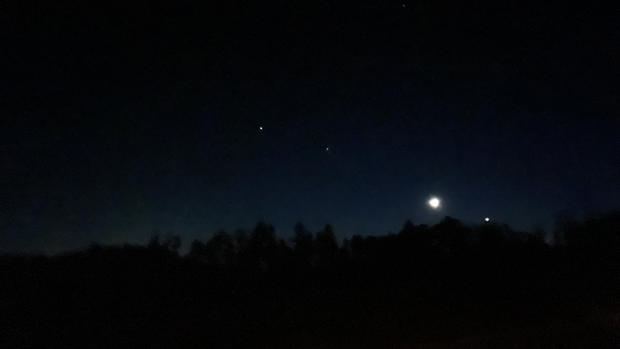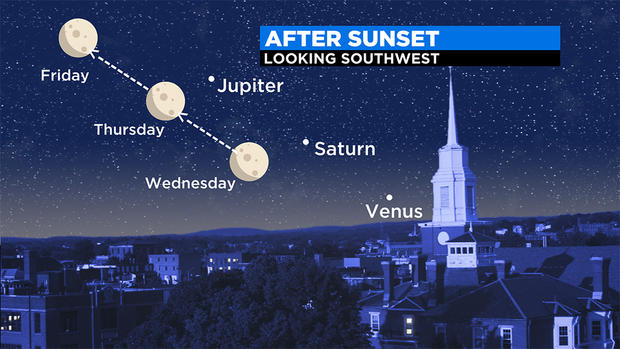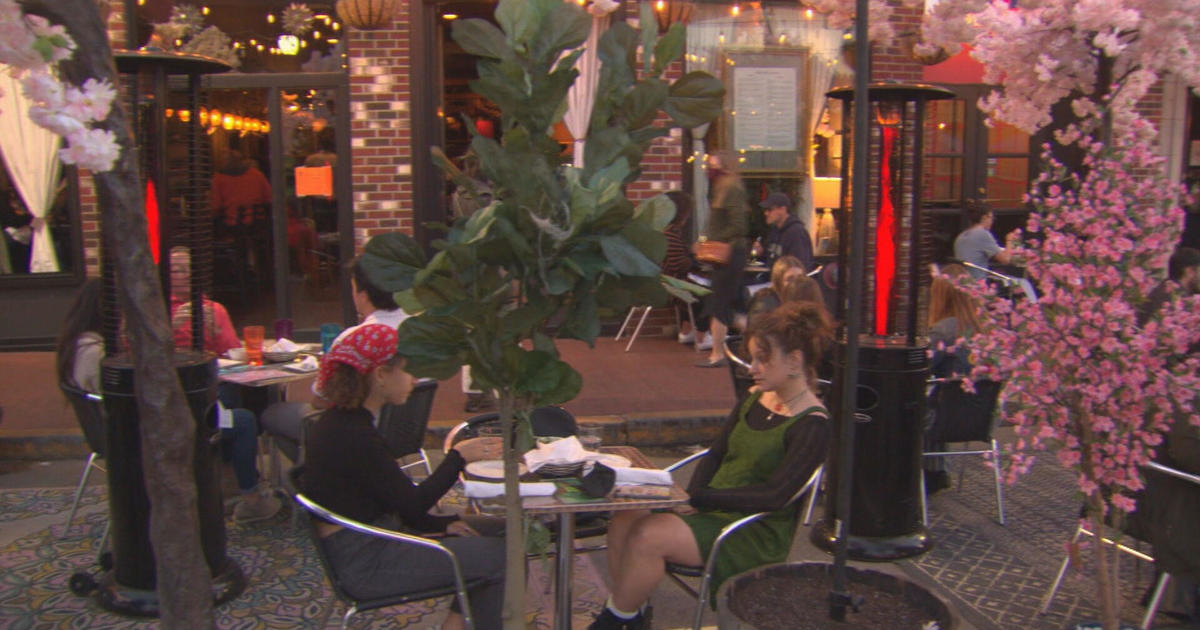Night Sky Watching: See 3 Planets Align With The Moon This Week
BOSTON (CBS) -- The autumn evenings are some of the best of the year for sky watching. The clear and crisp nights, void of the summer haze and pollutants, make for amazing conditions to see all kinds of fun things in the nighttime sky. From Space Station flybys to meteor showers and various planets there is a LOT going on just this month!
You may have noticed some bright stars near the Moon over the last few nights. Those, in fact, are not stars at all, they are planets! If you look to the southwest tonight after sunset, best to wait until about an hour after sunset (around 530 p.m.), you will clearly see three planets in a diagonal line along with the first quarter Moon! The great part, you don't need a telescope or even binoculars, you can see it all with the naked eye. . . trust me, you can't miss it!
I've got even more good news: If you miss it Wednesday night, the show will continue for the next several nights.
The planets will remain in about the same location each night, but the Moon will be moving up the diagonal each night. Venus will be the planet closest to the horizon, followed by Saturn to its upper left. Jupiter completes the lineup to the upper left of Saturn. The Moon will be just to the left of the diagonal but higher and higher each night. A few hours after sunset on Wednesday night it will appear next to Saturn. At the same time on Thursday it will appear closer to Jupiter and by Friday it will be higher then all the planets, essentially joining the lineup!
Something to ponder as you gaze at the Moon and planets over the next few nights: While the Moon appears to be quite close to Saturn and Jupiter it really isn't, just a matter of perspective. According to Sky and Telescope, Saturn is about 4,000 times farther away from Earth than the Moon and about 35 times larger in diameter. Jupiter is a whopping 1,900 times farther away from Earth than the Moon and 41 times larger!
Coming up next week, the Leonid Meteor Shower - one of the most popular of the year. The Leonids have produced some of the best shows in years past, at times up to several thousand per hour. This year isn't predicted to be nearly that dramatic and the waxing gibbous Moon will also dull the show a bit. Under prime conditions, some of us may get a glimpse of 5-10 "shooting stars" per hour. Best time to view them next week will be the pre-dawn hours of November 17, just after the Moon has set. More on that next week!
If you happen to snap any pictures of the Moon, planets or meteors, we would love to see them! Send them to weather@wbztv.com.
Happy viewing!
Follow Terry on Twitter @TerryWBZ





